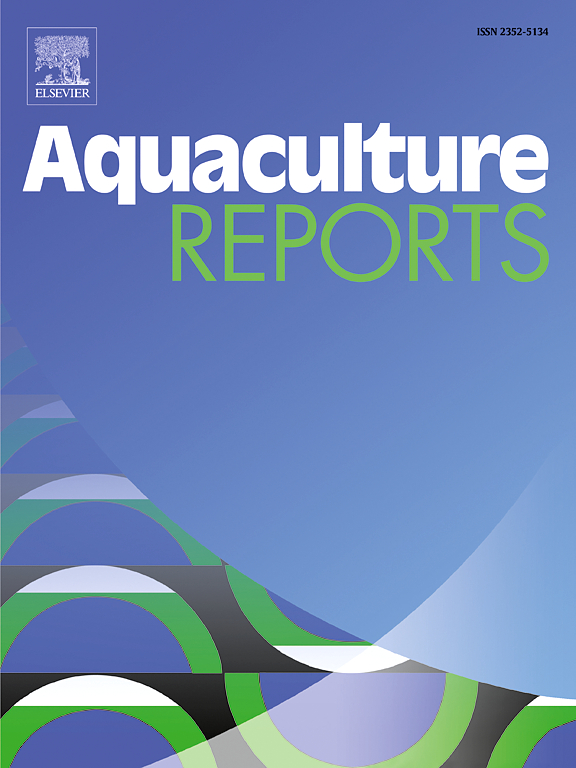Exploring the effects of anthropogenic EMF on fish embryo development: Survival and orientation responses
IF 3.7
2区 农林科学
Q1 FISHERIES
引用次数: 0
Abstract
Research on the effects of electromagnetic fields (EMF) on living organisms, particularly developing fish embryos, is becoming increasingly important due to the rising number of electrical appliances and the expanding energy infrastructure. This article presents laboratory studies on the impact of anthropogenic EMF on the fertilized eggs of four fish species: pike, sea trout, vimba bream, and common chub. The study focused on the survival rates of developing eggs and the spatial orientation of embryos at the blastopore closure stage. The results reveal a differential effect of EMF on fish egg survival. Pike and sea trout eggs exhibited increased mortality when exposed to EMF, whereas vimba bream and common chub eggs showed no significant increase in mortality. The findings regarding embryo orientation under EMF exposure suggest possible changes in spatial orientation, although statistical analysis does not conclusively confirm this. Clear results were observed in the natural geomagnetic field of the Earth, with embryos showing a tendency to align along the north-south axis. In conclusion, although the study did not definitively confirm or exclude the influence of EMF on the survival and spatial orientation of embryos in the fish species studied, the findings provide important insights into the discussion about the impact of anthropogenic EMF on fish embryogenesis.
探讨人为电磁场对鱼类胚胎发育的影响:生存和定向反应
由于电器数量的增加和能源基础设施的扩大,电磁场(EMF)对生物,特别是发育中的鱼类胚胎的影响的研究变得越来越重要。本文介绍了人为电磁场对四种鱼类受精卵的影响的实验室研究:梭子鱼、海鳟鱼、文巴鲷鱼和鲈鱼。本研究的重点是发育卵的存活率和胚在囊胚闭合阶段的空间取向。结果揭示了电磁场对鱼卵存活的不同影响。派克和海鳟鱼卵暴露于电磁场时死亡率增加,而温巴鲷鱼和普通鲑卵的死亡率没有显著增加。关于EMF暴露下胚胎取向的研究结果表明空间取向可能发生变化,尽管统计分析并不能最终证实这一点。在地球的自然地磁场中观察到明确的结果,胚胎显示出沿南北轴线排列的趋势。总之,尽管该研究没有明确证实或排除电磁场对所研究鱼类胚胎存活和空间取向的影响,但该研究结果为讨论人为电磁场对鱼类胚胎发生的影响提供了重要见解。
本文章由计算机程序翻译,如有差异,请以英文原文为准。
求助全文
约1分钟内获得全文
求助全文
来源期刊

Aquaculture Reports
Agricultural and Biological Sciences-Animal Science and Zoology
CiteScore
5.90
自引率
8.10%
发文量
469
审稿时长
77 days
期刊介绍:
Aquaculture Reports will publish original research papers and reviews documenting outstanding science with a regional context and focus, answering the need for high quality information on novel species, systems and regions in emerging areas of aquaculture research and development, such as integrated multi-trophic aquaculture, urban aquaculture, ornamental, unfed aquaculture, offshore aquaculture and others. Papers having industry research as priority and encompassing product development research or current industry practice are encouraged.
 求助内容:
求助内容: 应助结果提醒方式:
应助结果提醒方式:


